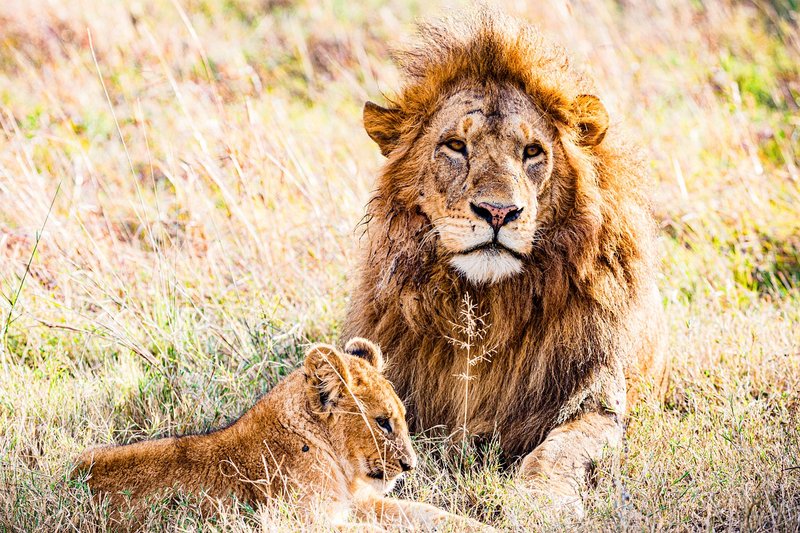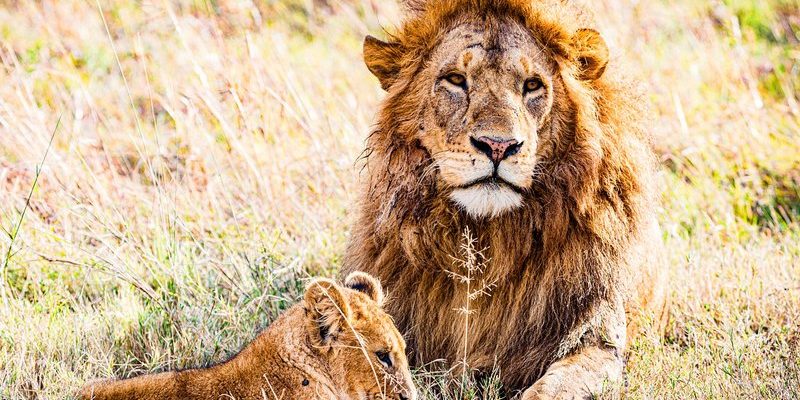
Often, we think of wild animals as fierce predators, but it’s important to remember that they’re just living their lives, much like we do. If you’re ever lucky—or unfortunate—enough to find yourself in a face-to-face encounter with a lion, understanding the best actions to take can help you navigate this potentially dangerous scenario with calmness and awareness.
Let’s dive into what you should do if you find yourself face-to-face with a lion in the wild.
Stay Calm and Assess the Situation
When you see a lion, your first instinct might be to bolt. But here’s the thing: lions are more likely to attack if they sense panic or fear. The *first step* is to take a deep breath and stay calm. Feel your heart rate slow a bit and focus on your surroundings.
Is the lion paying attention to you, or is it more interested in something else, like prey? If the lion seems relaxed and unfocused on you, your best option is to maintain a safe distance. Think of it like a game of chess; your moves need to be deliberate.
If the lion does notice you, don’t make any sudden movements. Keep your body steady, and avoid direct eye contact. In the animal kingdom, staring can be seen as a challenge, and you definitely don’t want that. Instead, try to gauge its body language. Is it crouched low, or is it standing tall? Understanding these cues can help you determine your next move.
Back Away Slowly
If the lion is aware of you, backing away slowly is a critical next step. The key is to maintain your composure while also giving the lion space. Don’t turn your back. Instead, move backward while keeping the lion in your sight, ensuring you don’t appear to be running away.
Think of this as a slow waltz; you want to smoothly transition away from the lion while keeping your dignity intact. If you start to run, it might trigger the lion’s instinct to chase. Nobody wants that scenario.
While backing away, make sure you’re aware of what’s behind you. Watch for any obstacles, like rocks or branches, that could trip you up. And remember, it’s important to avoid any loud noises or sudden movements that might provoke the lion.
Make Yourself Look Bigger
If the lion approaches you, it’s time to take a different approach. Making yourself look bigger is a tactic many wildlife experts recommend. This part might seem a bit odd, but trust me, it can work.
Hold your arms out wide and stand tall. If you have a jacket or bag, raise it above your head. The idea is to appear more intimidating. Lions often size up their potential threats, and if you look like a formidable opponent, they might think twice before advancing.
You can also engage in noise-making if necessary. Use a loud and firm voice to assert your presence. Shouting and clapping can also make you seem more imposing. The idea is to deter the lion rather than provoke it, so ensure your tone remains assertive but not aggressive.
Stay in a Group
If you are with others during this encounter, stick together. There’s strength in numbers, and a lion is less likely to approach a group of people. Huddling together can create a more imposing figure, similar to how a flock of birds can deter a predator.
In any wildlife situation, it’s beneficial to remain aware of your companions as well. Often, a shared experience can keep nerves at bay. Whispering strategies to one another or simply reminding each other to stay calm can help maintain a collective composure.
Avoid spreading out; that could make you more vulnerable. The group should aim to back away slowly while maintaining a united front against the lion.
Leave the Area if Possible
If the lion doesn’t seem aggressive but remains nearby, your next best move is to leave the area quietly and carefully. Look for the safest route back to your vehicle or complete safety.
As you move, continue to watch the lion’s behavior. If it remains calm and relaxed, you can afford to move at a steady pace. However, if it starts to approach, you may need to pick up the pace while still avoiding sudden movements. Just don’t run.
Once you’re at a safe distance, it’s wise to pack up and leave the area entirely. Remember, lions are territorial animals and might return to the same spot. Once you’ve had your fill of excitement (or adrenaline), give the area some time before returning.
Understand Lion Behavior
To truly appreciate the situation, having a basic understanding of lion behavior can be incredibly helpful. Lions are social animals, living in groups known as prides. Surprisingly, they often prefer to avoid humans if possible.
Most lion attacks occur when humans inadvertently encroach on their territory or when they’re provoked. Learning more about their habits can help you react appropriately. For example, lions are more active at dawn and dusk, so try to plan your explorations during broader daytime hours.
By being informed about lion behavior, you can increase your chances of having a safe and fascinating experience in their habitat. Remember, *knowledge is power*.
Preparation is Key
Finally, let’s talk preparation. Before you head out on any wildlife adventure, it’s essential to equip yourself with the right knowledge. Consider going to a local wildlife class or reading up on animal behavior. Knowledge not only empowers you but also offers confidence when tackling unexpected situations.
Equipping yourself with essentials like a whistle, bear spray, or a signal mirror can also be a wise choice. These items can serve as deterrents in various wildlife scenarios.
Your safety during wildlife encounters starts long before you find yourself gazing into the eyes of a lion. Planning ahead ensures that you’re ready for anything that nature throws your way.
In Conclusion
Encountering a lion in the wild can be an exhilarating yet frightening experience. Knowing how to react—like staying calm, backing away slowly, and making yourself look bigger—can turn a daunting situation into just another adventure story. Always remember that as awe-inspiring as these creatures are, they’re also wild animals, and respecting their space is crucial.
When you prepare and equip yourself with knowledge, you create a safer experience for yourself and the animals around you. So, next time you venture into the wild, keep your head up, breathe deeply, and enjoy the beauty of nature. Who knows? You might just have the adventure of a lifetime!

